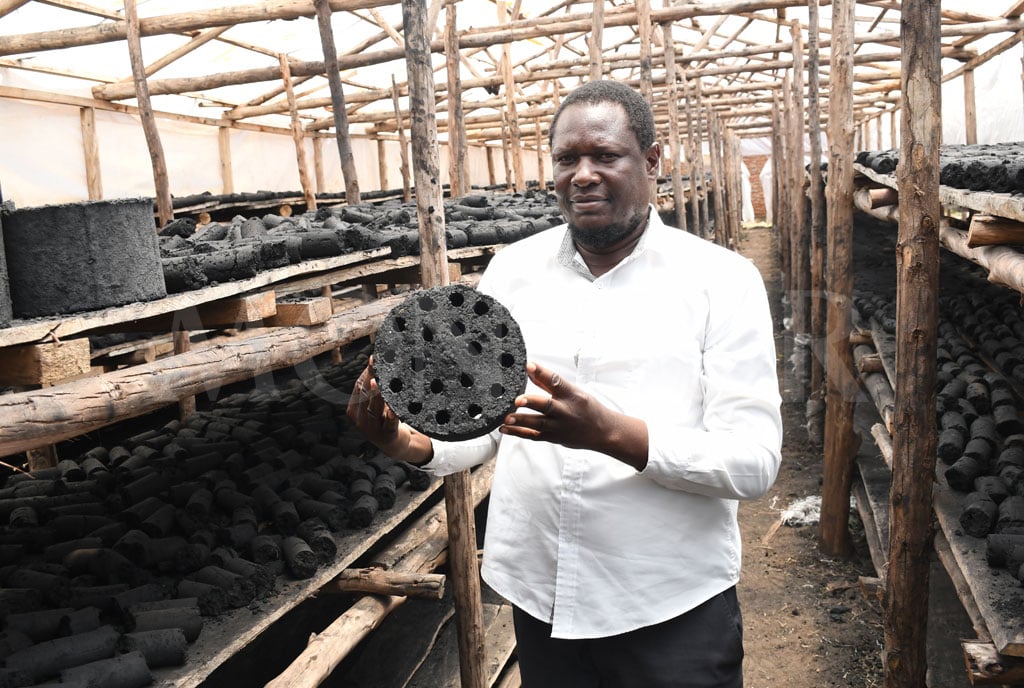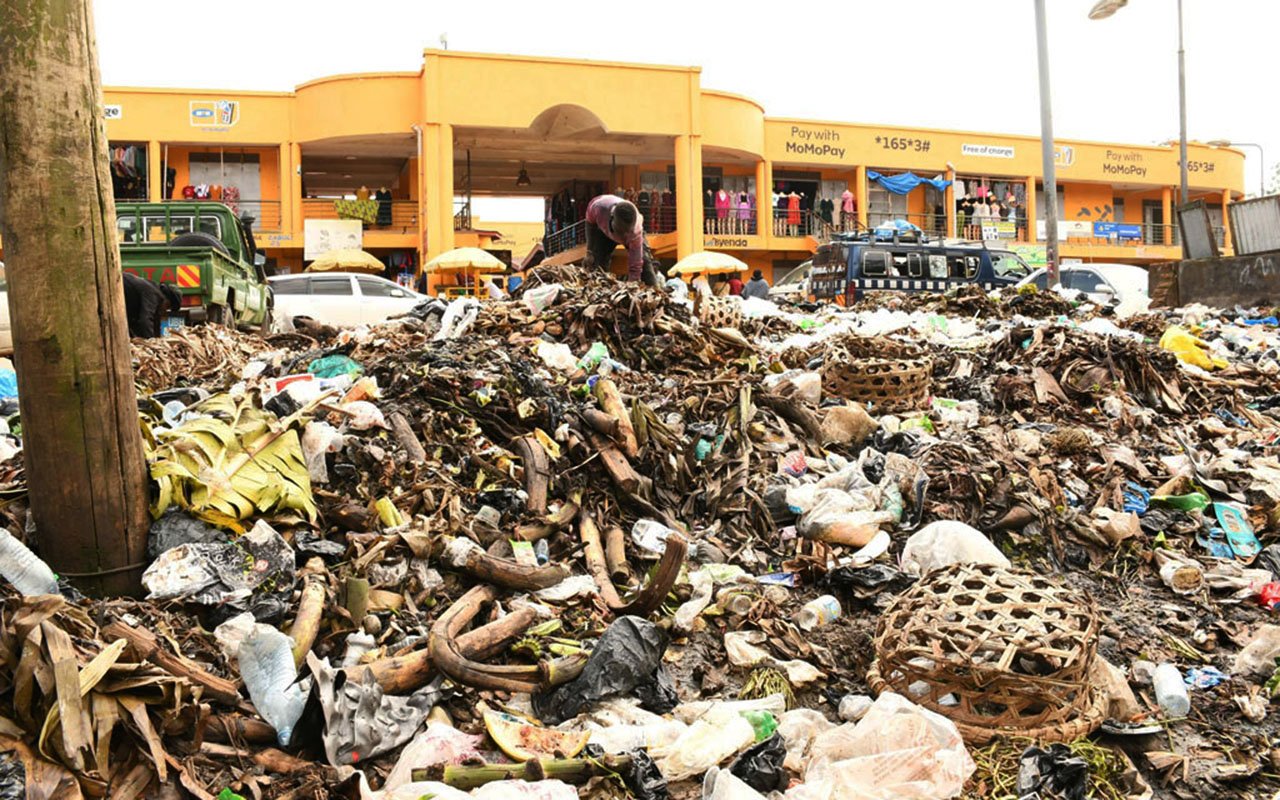Prime
Man turns G-nut husks into wealth, one briquette a time

Mr Albert Okurut displays briquettes made from groundnut husks in Kumi District. PHOTO/SIMON PETER EMWAMU
What you need to know:
- The initiative provides a sustainable and cleaner alternative to charcoal for cooking and heating.
A businessman in Teso Sub-region has found gold in turning groundnut husks into briquettes.
Previously, these husks, discarded as waste after shelling, were left to rot. However, with the rise of briquettes as an alternative cooking energy source, this waste has gained value.
Mr Albert Okurut, the proprietor of Akibui Farmers’ Millers in Kumi District, had been in the groundnut shelling and produce business for nearly two decades. However, disposing of the husks had always been a challenge.
His perspective changed when Kumi Municipal Council opened a road through the area where he used to dump the husks, leaving him in distress. It was then that someone suggested using the husks as raw material for briquettes.
“It was a business opening that I had no idea about, I decided in 2020 to travel to Kenya to benchmark on how the briquettes are made, but also to inquire where I could find the best briquette making machines,” Mr Okurut said.
He added that upon returning, he commissioned a fabricator in Kampala to build the necessary machinery, costing him about Shs60 million. Once the machines were installed last year, he began producing briquettes from the groundnut husks accumulating at his mills on Ongino Road, north of Kumi Town.
Mr Okurut has convinced three institutions in Kumi Town to switch from charcoal to briquettes. Several households in Kumi and neighbouring districts have also adopted the alternative.
The production process involves carbonating the husks to ensure the briquettes emit no smoke during use, making them a cleaner alternative to charcoal.
Mr Okurut is optimistic about the future of his business, especially as Tisai Island, which has supplied Kumi Town with charcoal and firewood, is running out of trees.
“So far, the market is showing better prospects, unlike the charcoal, the briquettes don’t emit smoke and don’t leave the black soot on the saucepans,” he explained.
Mr Okurut’s briquettes are sold in 50kg packages, with each kilogramme at Shs1,000. Although the market is still limited and faces competition from charcoal, he believes that in the next five years, the demand will grow.
His facility produces more than seven tonnes of briquettes daily, which take three days to dry before being packed for sale.
“To have fine products, we use molasses which is mixed with carbonated husks to have a complete product of briquettes,” the businessman said.
Mr Okurut employs more than 25 casual workers at the briquette-making facility, as well as at the rice, maize, and groundnut mills, which supply the raw materials.
Dr David Okello Kalule, a principal research officer and the new director at the National Semi-Arid Resources Research Institute (NaSARRI) in Serere District, highlighted other potential uses for groundnut husks. These include making egg trays, animal feeds, bags, and even as nutrients for soil.
With eastern and northern Uganda being leading groundnut producers, these regions have the potential to become major suppliers of briquettes.

Workers make briquettes at Albert Okurut’s briquette-making outlet in Kumi District. PHOTO/SIMON PETER EMWAMU
Mr Moses Opio, the natural resource officer of Kumi District, noted that the demand for briquettes is likely to rise as the extraction of trees for charcoal and firewood far outpaces replanting efforts.
The increasing scarcity of trees has already driven up charcoal prices, with a single bag now costing up to Shs100,000, depending on the type of wood used.
Ms Harriet Apio, said the briquettes take some time to ignite, but once they are heated, they become cost-effective.
Ms Apio emphasised that the briquettes provide long-lasting heat, making them a valuable resource for energy efficiency. She, however, said the briquettes leave a significant amount of ash underneath the cooking stove.
The process
According to Mr Albert Okurut, making briquettes from groundnut husks, involves carbonating the husks either by burning them or decomposing them for three months.
After the husks are completely carbonated, they are packed in sacks from where substantial quantities are picked and either mixed with molasses to bind the husk dust, or one can use cassava flour mixed with water for binding purposes.
Mr Okurut explained that the mixture is poured into the briquette-processing machine, where it is compressed into briquette molds. After this, the briquettes are spread out in shaded areas for drying.




